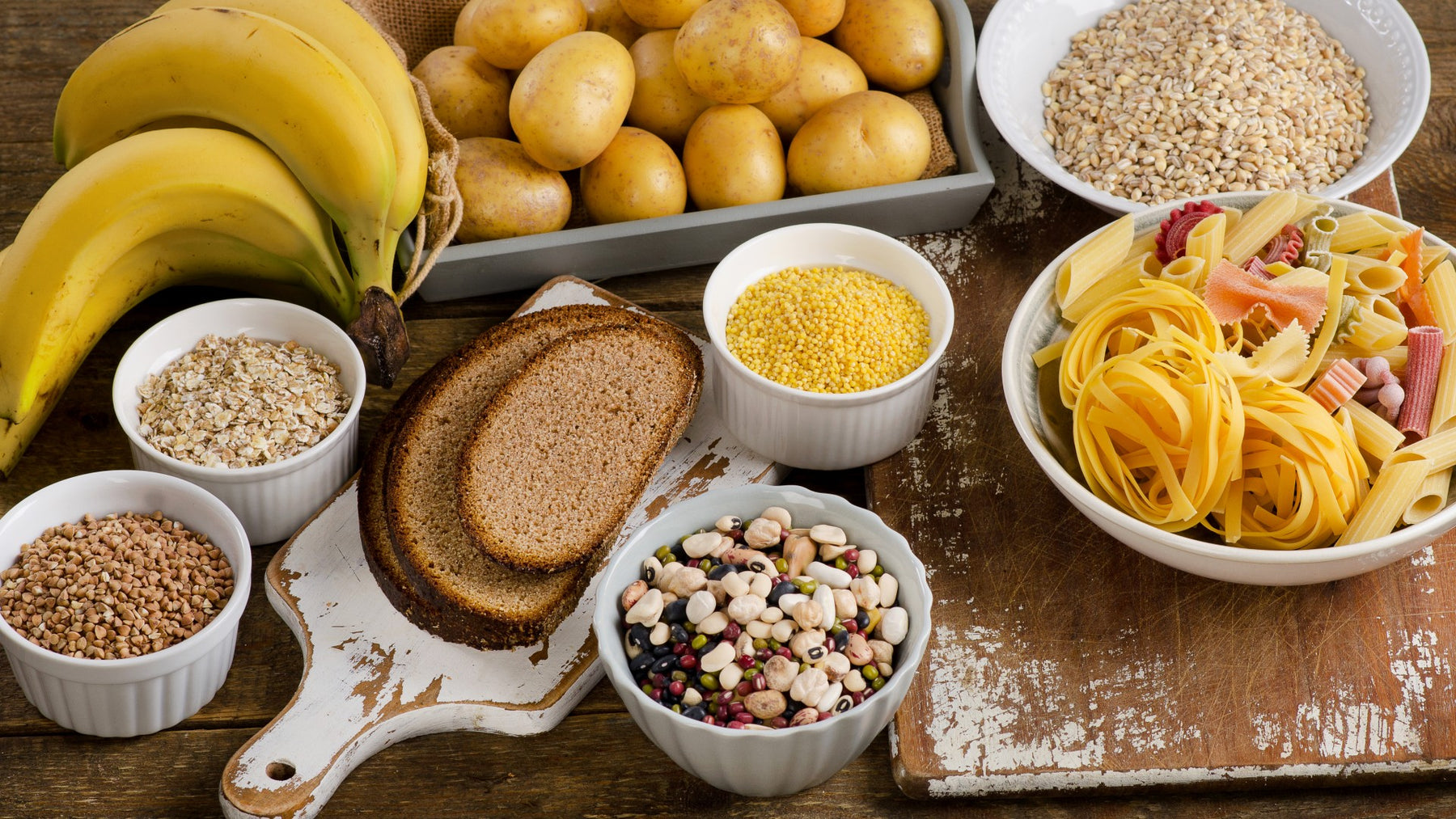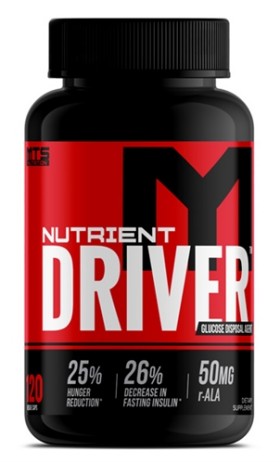
Glucose Disposal - Winning the War With Carbs!
However, the majority of us aren't genetic freaks and our nutrient partitioning and glucose disposal abilities are somewhere between mediocre and extremely poor. For us, adding muscle and losing fat takes considerably more effort, but all is not lost.
Related - Whey Protein's Impact on Blood Glucose
Fortunately, researchers have identified several all-natural compounds that improve the body's absorption, utilization, and disposal of glucose. These are aptly titled glucose disposal agents.
Don't worry if you're not familiar with the term or even how they work because we've got all the info ahead in easy to understand terms.
Up Close With Carbs
To understand how glucose disposal agents (GDAs) work, we first must gain an understanding of what happens when we consume carbohydrates. Most carbs are composed of large chains of sugar molecules, known as monosaccharides. When several monosaccharides (simple sugars) are linked together, they form a polysaccharide, or complex carbohydrate.Your body must break down these longer chains into smaller ones before they can be absorbed into the bloodstream and utilized by the body. Carb digestion begins in the mouth where amylase (a salivary enzyme) breaks down starch (a complex sugar found in plant foods) into smaller molecules.
Carbs then enter the stomach and pass right on through to the small intestine, where other enzymes convert these smaller, simple sugars into glucose and fructose. These are the two sugars that enter the bloodstream and are used by the body for energy.
Carbs = Fuel
Despite what most keto enthusiasts will say, carbohydrates are the body's primary, and preferred, energy source. While proteins and fats can certainly be used for energy, the body only turns to those as a fuel source after it's used up the carbohydrates in your body.Once glucose and fructose enter the bloodstream, they are absorbed by various tissues of the body. Fructose is readily absorbed by the body, while glucose, on the other hand, requires the assistance of a hormone called insulin.
Insulin: Muscle Maker or Fat Gainer
Insulin's primary responsibility is transporting glucose into its destination cells. Simply put, insulin makes cells GROW. This makes insulin incredibly anabolic as it enhances muscle cell growth; however, insulin can also make fat cells grow too - thus the dual-sided nature of this crucial hormone.Carbs are stored in one of three ways in the body:
- Ideal scenario - stored as muscle glycogen
- Stored as glycogen in the liver
- Worst case - stored as fat in adipose tissue
Therefore, the more glucose we can shuttle into skeletal muscle, the less that are converted and stored as fat. This is the key to an athletic and aesthetic physique that's high on muscle and performance and low on fat.
Gaining with Glucose Disposal Agents
As we already stated, not everyone is a genetic elite, and with that comes less than optimal insulin regulation and sensitivity. In addition to more efficiently loading glycogen, improving the body's insulin sensitivity also enhances how efficiently it takes up other valuable nutrients needed for muscle growth and repair.The next logical question then is - how can we improve on the body's natural insulin sensitivity?
Enter glucose disposal agents.
The whole basis of GDAs is using natural ingredients, including herbs, vitamins, and other assorted nutrients, to improve the body?s processing, digestion, and absorption of sugars.
GDAs not only help regulate insulin and blood sugar levels, but they also enhance nutrient partitioning -- how your body stores the carbs you do consume.
Common Glucose Disposal Agents Ingredients
There are a vast number of ingredients you'll encounter in the various GDAs on the market, but a few a proven to be more effective when it comes to putting carbs "in their place":- Chromium picolinate - an essential mineral that augments the actions of insulin, and clinically proven to control blood sugar and regulate insulin. [2]
- Berberine - alkaloid found in a number of herbs. Berberine stimulates Adenosine Monophosphate-Activated Protein Kinase (AMPK) while also inhibiting Protein-Tyrosine Phosphatase 1B (PTP1B). [3] Greater AMPK activation results in improved insulin sensitivity and glucose uptake into cells, as well as reduced glucose production in the liver. [4][5]
- Alpha Lipoic Acid (ALA) - Fatty acid that exists in the mitochondria of every cell in your body. It serves as a vital cofactor in cellular energy production, but more importantly, it enhances glycogen storage and reduces blood sugar due to its actions with GLUT-4 (a critical glucose transporter in the body). [6][7]
- Banaba Leaf - Leaves of the Banaba plant are rich in corosolic acid, a compound clinically proven to boost glucose control by mimicking insulin, ultimately aiding glucose metabolism. [8]
Glucose Disposal Agent Benefits
- Enhance the effects of insulin
- Act as an insulin-mimetic - activates glucose uptake independent of exogenous insulin use.
- Improve muscle building
- Support fat loss
- Reduce inflammation
- Antioxidant support - combats free radicals
- Efficiently store carbs in muscle
- Reduce food cravings
MTS Nutrient Driver
Click here to order Nutrient Driver: Make carbs great again!
MTS Nutrition's latest ground-breaking innovation is the ultimate glucose disposal agent. MTS Nutrient Driver includes five clinically-backed ingredients for superior glucose utilization and nutrient partitioning.
The days of "carbs make me fat" are long gone. Nutrient Driver's blend of chromium, berberine, banaba leaf extract, R-ALA, and gymnema sylvestre extract harness the power of your natural insulin and shuttle more glucose into the muscle and away from fat cells.
MTS has created a premium all-natural insulin mimetic that improves natural insulin production and sensitivity, giving you nothing short of stellar muscle growth, size, vascularity, and even weight loss.
Takeaway
Mediocre or "bad" genetics don't have to be a death sentence for your muscle building or fat loss goals. Glucose Disposal Agents represent a natural, effective, and safe method for improving body composition and overall health.Carbs are no longer the enemy in your battle for a prime physique, with GDAs at your side, carbs are now a powerful ally to build slabs of lean, dense, muscle!
References
1) K J Acheson, Y Schutz, et al. Glycogen storage capacity and de novo lipogenesis during massive carbohydrate overfeeding in man.Am J Clin Nutr 1988 48: 2 240-7. http://ajcn.nutrition.org/content/48/2/240.abstract2) Preuss, H. G.; Echard, B.; Perricone, N. V.; Bagchi, D.; Yasmin, T.; Stohs, S. J. (2008). "Comparing metabolic effects of six different commercial trivalent chromium compounds". Journal of Inorganic Biochemistry. 102 (11): 1986?1990. http://www.sciencedirect.com/ science/article/pii/S0162013408001785
3) Li Y, et al; Bioactivities of berberine metabolites after transformation through CYP450 isoenzymes . J Transl Med. (2011)
4) Liu LZ, et al; The pivotal role of protein kinase C zeta (PKCzeta) in insulin- and AMP-activated protein kinase (AMPK)-mediated glucose uptake in muscle cells . Cell Signal. (2010)
5) Kim WS, et al; Berberine improves lipid dysregulation in obesity by controlling central and peripheral AMPK activity . Am J Physiol Endocrinol Metab. (2009)
6) Gupte AA, et al; Lipoic acid increases heat shock protein expression and inhibits stress kinase activation to improve insulin signaling in skeletal muscle from high-fat-fed rats . J Appl Physiol. (2009)
7) Wang Y, et al; alpha-Lipoic acid increases energy expenditure by enhancing adenosine monophosphate-activated protein kinase-peroxisome proliferator-activated receptor-gamma coactivator-1alpha signaling in the skeletal muscle of aged mice . Metabolism. (2010)
8) Fukushima M, et al; Effect of corosolic acid on post challenge plasma glucose levels . Diabetes Res Clin Pract. (2006)


Leave a comment